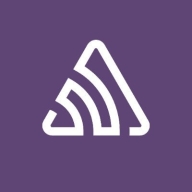

Sentry and Odigos compete in the monitoring and observability space. Odigos seems to have the upper hand due to its robust feature set, offering more comprehensive value.
Features: Sentry includes real-time error tracking and performance monitoring, focusing on alerting and issue resolution. It supports straightforward integration for user-friendly usage. Odigos provides advanced automated tracing capabilities and data-driven insights, ideal for complex environments with its extensive suite of observability tools.
Ease of Deployment and Customer Service: Sentry's deployment process is straightforward, enhanced by responsive customer service. Odigos, while offering a complex but flexible deployment model, is supported by thorough documentation and technical assistance, making it suitable for scalable solutions catering to varied needs.
Pricing and ROI: Sentry's competitive pricing attracts cost-conscious buyers, promising a clear return on investment through effective error monitoring. Odigos may entail higher initial costs, but it delivers a greater ROI with its advanced analytics and automated features, optimizing long-term performance.

Odigos is a sophisticated tech solution designed to enhance efficiency and decision-making through advanced analytics and streamlined workflows, addressing modern challenges faced by businesses today.
Odigos offers a platform tailored for businesses seeking improved data handling and workflow optimization. It merges analytics with operational tasks to provide insights that guide strategic decisions. Businesses leveraging Odigos often find improvements in data interpretation and task management, leading to more informed decisions and greater operational fluidity. While renowned for its robust capabilities, there is potential for growth, particularly in expanding customization options for specific industry needs and integrating new technological advancements to stay ahead of the curve.
What are the standout features of Odigos?In industries such as finance and healthcare, Odigos is commonly implemented to enhance data management and streamline operations. Its adaptability to specific industry regulations and needs makes it a valuable tool for professionals aiming to improve efficiency and mitigate risk. Odigos is often chosen for its capacity to integrate seamlessly with existing processes without causing disruption.
Sentry is a tool for monitoring web and application performance, tracking errors, processing request times, and managing user data access.
Developers integrate Sentry with web and application environments to capture front-end and back-end errors, utilize error logs, trace requests, and observe metrics without real-time production access. Sentry's use extends to monitoring internal applications, leveraging CyberArk PAM integration, deploying notifications, and detecting silent failures. Users benefit from detailed error and performance reports, contextual cause-stack information, and real-time breakdowns. There is room for improvement, as users desire refined integration and administrative settings, enhanced alert policies, and more customization in event metrics.
What are Sentry's most important features?Sentry is implemented across industries ranging from tech startups to large enterprises. These organizations use Sentry to enhance application reliability, track performance, and secure user data within protected environments. Integration with CyberArk PAM ensures secure deployment. Organizations find Sentry useful for monitoring internal applications, efficiently processing request times, and tracing changes in production without direct access.
We monitor all Application Performance Monitoring (APM) and Observability reviews to prevent fraudulent reviews and keep review quality high. We do not post reviews by company employees or direct competitors. We validate each review for authenticity via cross-reference with LinkedIn, and personal follow-up with the reviewer when necessary.